Thanks to Living Social, we are getting to see some parts of London that we never would have expected to; a few months ago, we purchased a deal do to a Jack the Ripper walking tour last week through Brit Movie Tours, who also offer explorations of film locations such as Harry Potter, Notting Hill and James Bond. I can’t really tell you what appealed to us about doing a Jack the Ripper tour; I suppose it just sounded like something very different and mysterious.
We met at Liverpool Street Station, at 7pm on an icy Friday evening, and set off on our expedition through the streets of London’s East End, a square mile that was once an overcrowded region of poverty and violence. As we wandered past historic buildings and streets we were told the tragic history of those who used to live in this squalid part of London; for the multitudes of people who didn’t have homes, they could pay 8 pence for a bed, 4 pence for a patch of floor, or 2 pence to lean, standing, on a piece of rope strung tightly across a room in one of the many ‘doss houses’. It was estimated at the time that 9,000 people used to sleep like this every night!
Prostitution was a profitable profession for women, which is why many of them chose to pursue it, either full-time, or simply when they couldn’t make ends meet. These were the women who fell victim to the infamous Jack the Ripper during the Autumn of Terror in 1888. Our guide did a great job at dispelling many myths that have been born from the Ripper legend, e.g. there were definitely 3, and as many as 5 victims, but the exact number has never been agreed upon; there was no mist on any of the nights when the Ripper murders occurred; they actually all happened in the early hours of the morning rather than at night etc.
Walking these streets at night, under the eerie street lamps, and standing on the very spots where some of the victims were found was chilling, and when our guide pointed to the street corner where one of the women was last seen talking to a man, presumed later to be the Ripper, you could almost picture the scene against the backdrop of the ancient buildings and darkened alleys.
Jack the Ripper was never caught (although there are plenty of theories as to who he was), but in modern times he would almost certainly have been arrested – there were numerous, albeit not all matching, sightings of the man; no doubt he would have left DNA behind, and he even left literal writing on the wall. After the murder of Catherine Eddowes in Mitre Square, a bloodied scrap of fabric was found in a doorway a few blocks away on Goulston Street; forensics later identified the blood as that of Jack’s latest victim, and the police returned to the site to discover chalk graffiti on the wall above where the evidence was found.
These days we take for granted the ease with which a photo can be taken, but in 1888 the cumbersome equipment had to be located and hauled to the site; the chief detective at the time decided that he couldn’t afford to leave the chalk on the wall whilst waiting for a photographer, in case anti-semitic riots broke out (as they were likely to do given the social climate at the time), so he ordered his policemen to copy down what they saw and then wash the evidence away. Of the eight policemen who wrote down the phrase, three different versions of spelling or wording resulted. The most common being:
“The Juwes are the men that will not be blamed for nothing”
It struck me as ironic, as I took a picture of the historical doorway on Goulston Street, that had they been able to take a picture of this possibly vital evidence, they might have been so much closer to identifying Jack the Ripper, and yet they didn’t have access to something that we take so much for granted these days.
The tour ended in Mitre Square, on the very spot where Catherine Eddowes’ body was discovered. I thoroughly enjoyed the 2.5 hour walking tour and would definitely recommend it if you find yourself in London and hope to experience something a little different from the usual tourist activities. I would suggest though that you do your research on Jack the Ripper before you go – there are lots of names and locations mentioned, and without a working knowledge of who fits in where in the history of this mysterious case, it could be easy to get lost.
And now, in keeping with the chilling theme of this subject matter, I’ll sign off as Jack the Ripper did in his last letter to the police…catch me when you can…

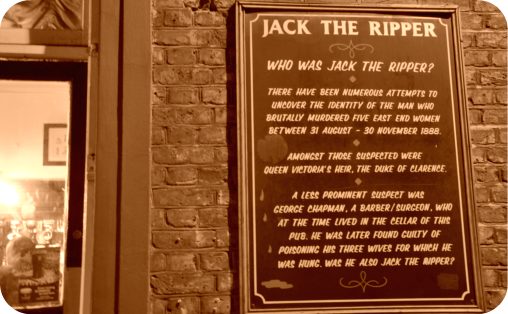

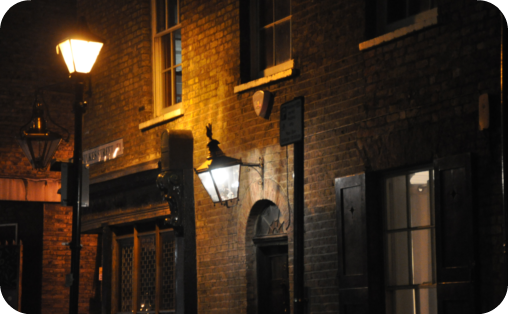

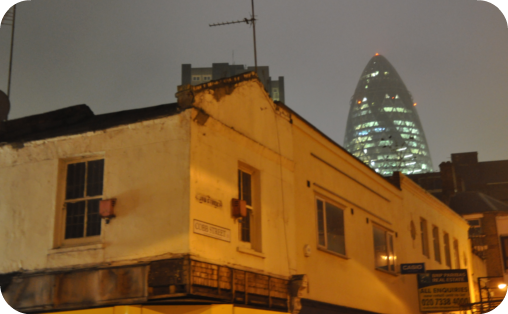
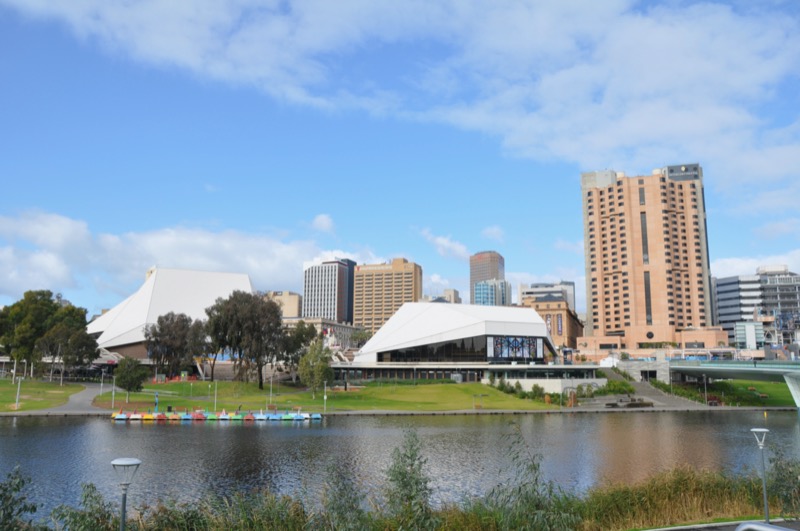

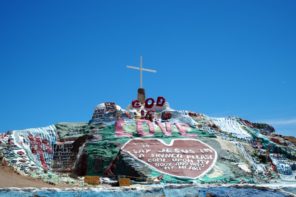
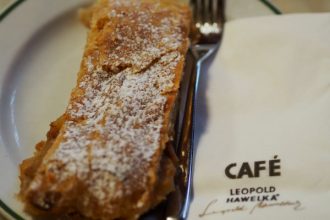
I find it a bit creepy how people are still mega interested in the Ripper. I’m not a fan of true crime books or films or anything along those lines, so when I took a Law and Literature class and had to read up on the Jack the Ripper legend I was a bit shocked at how into it people still are. Some of their mythologising seems disrespectful to the victims, and lots of accusations fly around as to who could have been the Ripper – I think the authors forget that they’re accusing someone (who was probably innocent) of really terrible crimes.
Maybe I’m oversensitive. I’d be really interested in a tour around the old parts of London and seeing how the working classes lived, but a Jack the Ripper tour would give me the shivers!